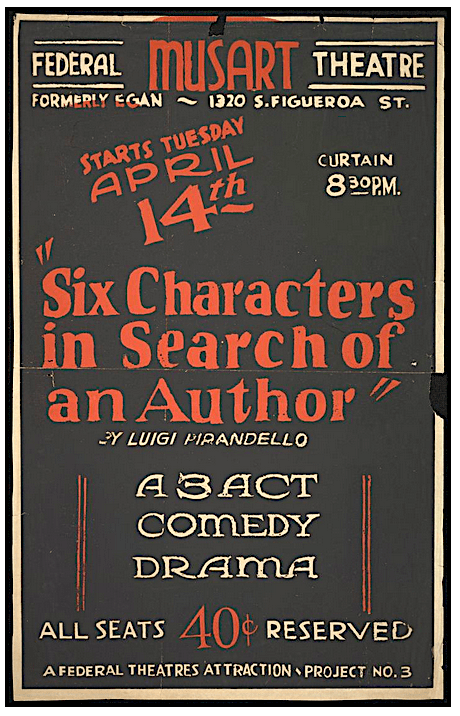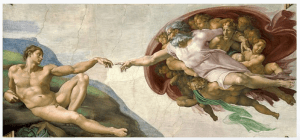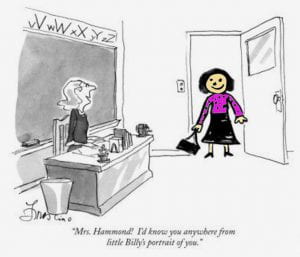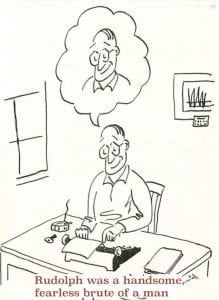What makes for a good thriller?
 Author Brad Taylor says, “Without a doubt, characters. Characters, characters, characters. One could write a scene where a car bomb is placed in an empty parking lot, set to go off in two minutes. The buildup is intense, with a “Day of the Jackal” feel of finding components and creating the device, but at the end of the day, do readers care about the empty parking lot? No. They only care if that bomb is going to harm someone they’ve invested emotional energy in — and that is the character of the story. Setting, pace and trajectory are important, but they’re irrelevant without the reader’s emotional investment, and that is driven by characters.” Read more on thrillers from the NY times, here.
Author Brad Taylor says, “Without a doubt, characters. Characters, characters, characters. One could write a scene where a car bomb is placed in an empty parking lot, set to go off in two minutes. The buildup is intense, with a “Day of the Jackal” feel of finding components and creating the device, but at the end of the day, do readers care about the empty parking lot? No. They only care if that bomb is going to harm someone they’ve invested emotional energy in — and that is the character of the story. Setting, pace and trajectory are important, but they’re irrelevant without the reader’s emotional investment, and that is driven by characters.” Read more on thrillers from the NY times, here.

 , is a play in three acts by Luigi Pirandello, using the device of the “theatre within the theatre,” the play explores various levels of illusion and reality.
, is a play in three acts by Luigi Pirandello, using the device of the “theatre within the theatre,” the play explores various levels of illusion and reality. 
 Here’s a question I have to ask myself often—how well do I know my characters? Yes, I can describe them (features like hair, makeup, dress, etc.) but do I really know them? A few years ago I met a long-lost half-brother. We talked and he was quiet, reflecting on a father he hardly knew. But, I never understood him until he told me about a letter he had written to his father. The response he got, and the way he reacted, gave me clues about the depth of his feelings. When I saw my half-brother walk away, he had the same gait as my father and my eyes were opened fully to his character. In writing, there is that elusive search to reveal a character by his or her actions, rather than through description. They give away their true identity with a gesture, body position, speech and response. In my latest novel, many of my characters are build upon people I know quite well, but others have to be fabricated from observations, etc. My goal is to have none of my characters appear flat (as in this cartoon). And, here’s a secret, one of the key characters in my book is a little like me—Oh, very well, a lot like me!
Here’s a question I have to ask myself often—how well do I know my characters? Yes, I can describe them (features like hair, makeup, dress, etc.) but do I really know them? A few years ago I met a long-lost half-brother. We talked and he was quiet, reflecting on a father he hardly knew. But, I never understood him until he told me about a letter he had written to his father. The response he got, and the way he reacted, gave me clues about the depth of his feelings. When I saw my half-brother walk away, he had the same gait as my father and my eyes were opened fully to his character. In writing, there is that elusive search to reveal a character by his or her actions, rather than through description. They give away their true identity with a gesture, body position, speech and response. In my latest novel, many of my characters are build upon people I know quite well, but others have to be fabricated from observations, etc. My goal is to have none of my characters appear flat (as in this cartoon). And, here’s a secret, one of the key characters in my book is a little like me—Oh, very well, a lot like me! How does an author find their characters? Here’s a clue—look around you when out and about, at the cafe or while shopping. Everyone you meet and everyone you see has the potential to be a character in your novel! I have used friends and even people sitting opposite me on a train (well, their shoes got into a novel). You can have fun when writing to invent a character who is a blend of a few people. Take someone’s nickname, another’s hairdo. Add a dress from a shop window, and a handbag from a google search. Next, add some details—a hook nose, bald head, unshaven, tattooed, limping, sunken eyes, etc. In my new novel, one of my characters wears lots of yellow. This may not seem significant, but it does later in the book when Sir Christopher Jenson (based a someone close to me) discovers a woman wearing yellow who is cuddling up to another character who has just lost his wife in a skiing accident. Yellow connects these two women for the reader and…I can’t tell you what happens!
How does an author find their characters? Here’s a clue—look around you when out and about, at the cafe or while shopping. Everyone you meet and everyone you see has the potential to be a character in your novel! I have used friends and even people sitting opposite me on a train (well, their shoes got into a novel). You can have fun when writing to invent a character who is a blend of a few people. Take someone’s nickname, another’s hairdo. Add a dress from a shop window, and a handbag from a google search. Next, add some details—a hook nose, bald head, unshaven, tattooed, limping, sunken eyes, etc. In my new novel, one of my characters wears lots of yellow. This may not seem significant, but it does later in the book when Sir Christopher Jenson (based a someone close to me) discovers a woman wearing yellow who is cuddling up to another character who has just lost his wife in a skiing accident. Yellow connects these two women for the reader and…I can’t tell you what happens!